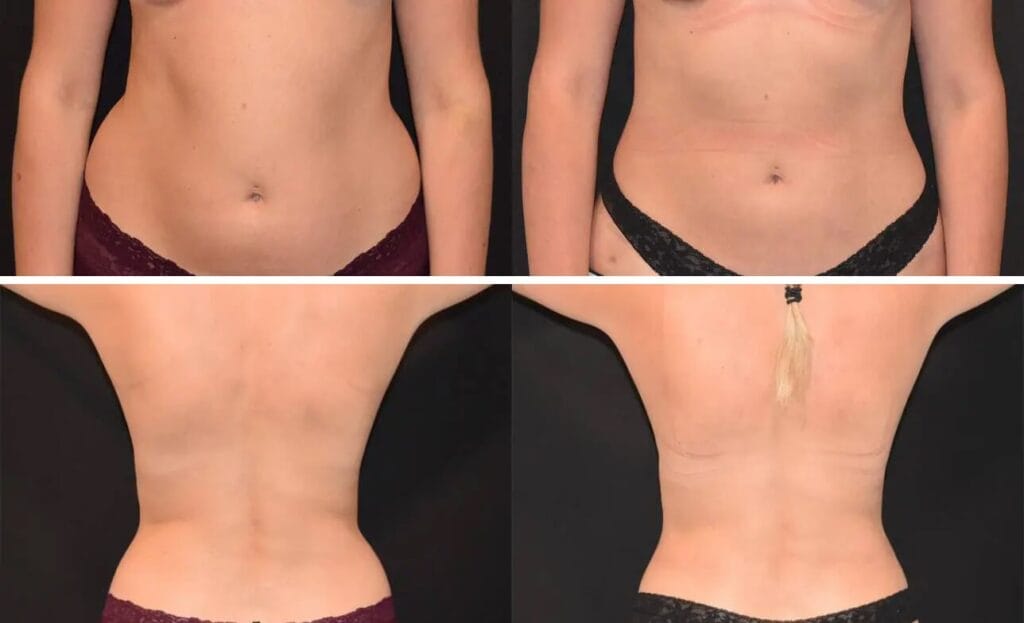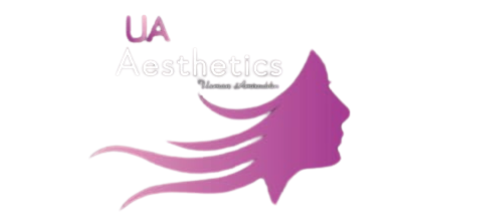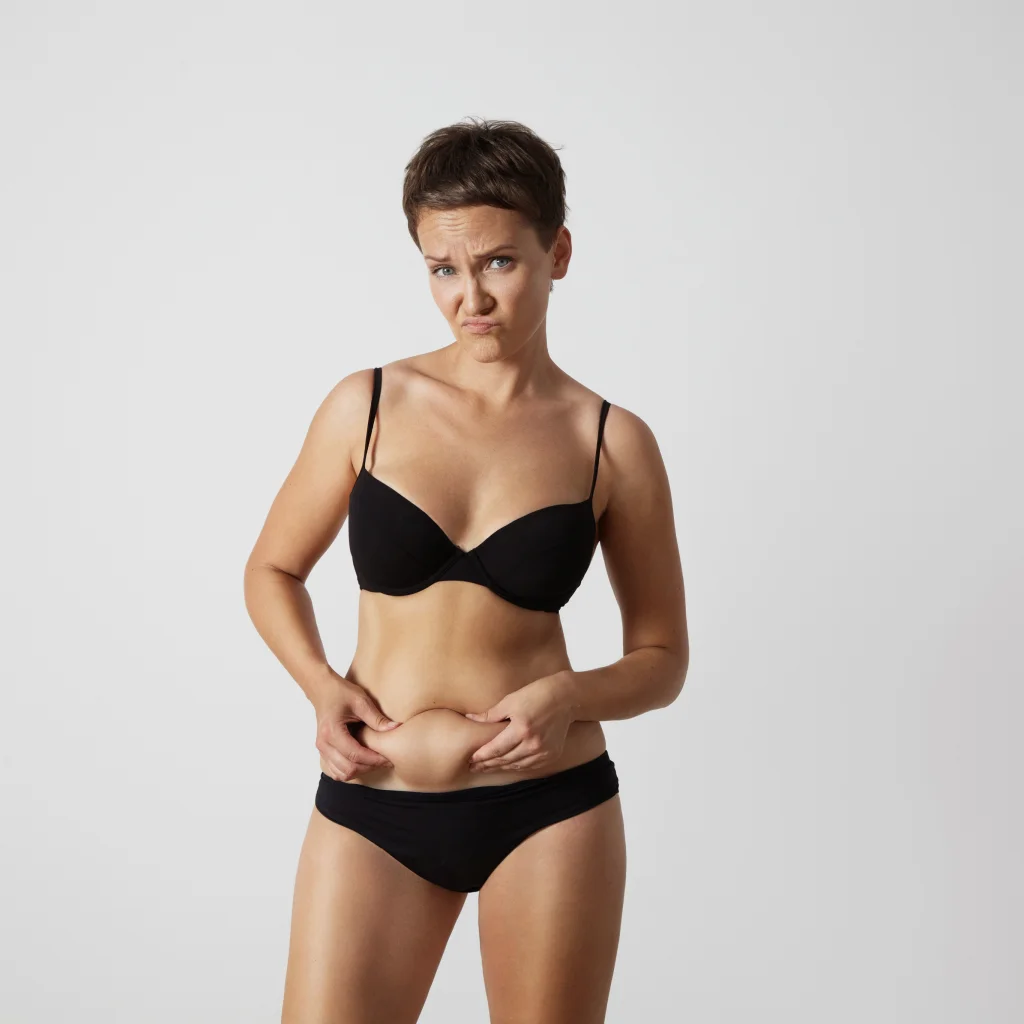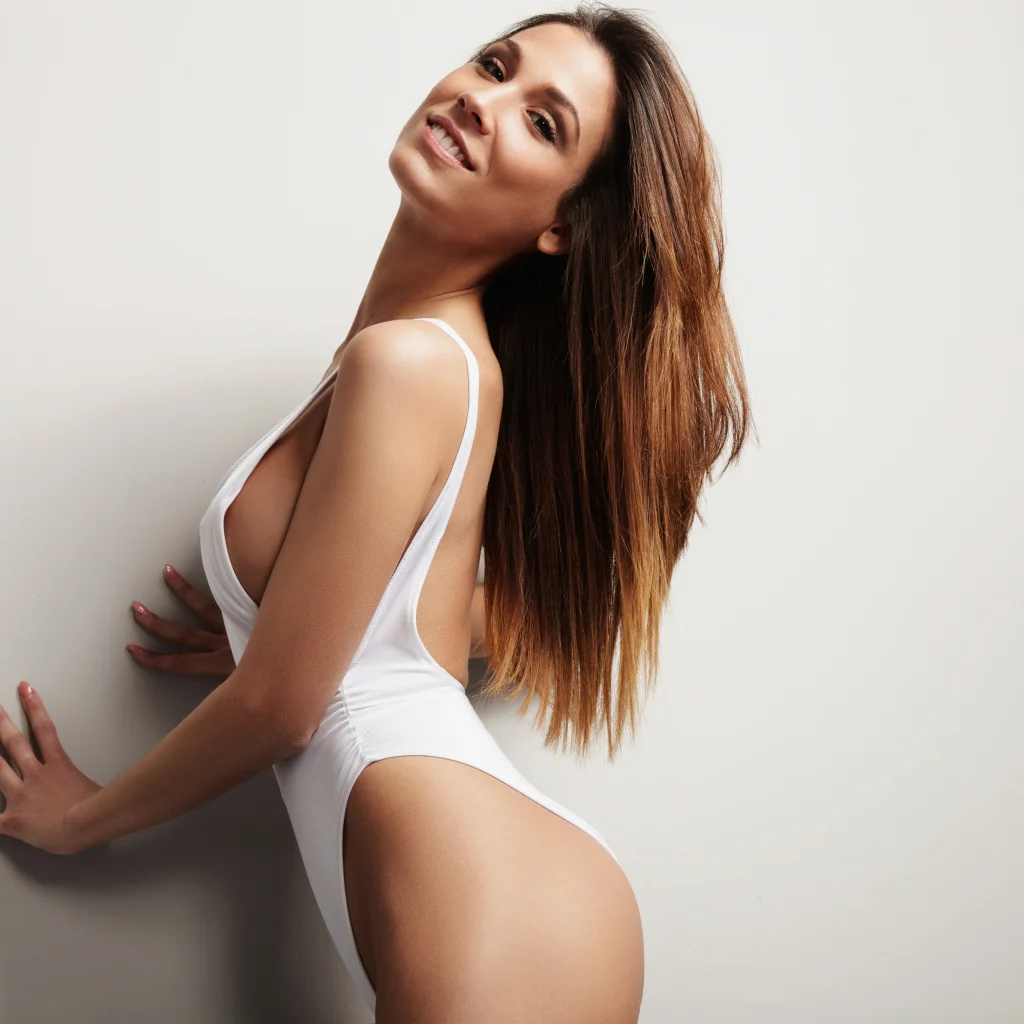Table of Contents
As Dr. Usman Amiruddin, a dedicated plastic surgeon from Pakistan and the owner of UA Aesthetics (uadaesthetics.com), I often encounter patients who come to me feeling frustrated and disheartened by those persistent pockets of fat that simply won’t disappear, no matter how rigorously they follow diet plans or exercise routines. In my clinics located in Lahore and Dera Ghazi Khan, liposuction has emerged as a highly sought-after solution for countless Pakistanis who are eager to achieve refined body contouring. This sophisticated cosmetic procedure is designed to precisely eliminate excess fat deposits from targeted areas, allowing us to sculpt and enhance your natural body proportions while significantly boosting your self-confidence. However, it’s crucial for me to emphasize right from the start that liposuction is not intended as a weight-loss method; rather, it serves as a precise, targeted technique aimed at reshaping and refining the body where other efforts fall short.
Common treatment areas include the abdomen, thighs, hips, arms, back, neck, and even the male chest, and thanks to ongoing modern advancements such as laser-assisted and ultrasound-guided options, the results are not only smoother but also come with reduced recovery times compared to traditional methods. For Pakistanis living worldwide—whether in bustling cities like Karachi or Lahore, or abroad in places like the UK, USA, or Middle East—preparing for significant life events such as weddings, family reunions, or professional milestones often involves a desire for a more polished and confident appearance. In my extensive practice, I’ve witnessed firsthand how liposuction aligns seamlessly with our cultural values that place a high premium on well-groomed and harmonious aesthetics, empowering patients to feel more at ease and vibrant in traditional attire like kurtas, shalwar kameez, or even modern jeans and fitted shirts. Let me take you on a comprehensive journey through how liposuction works, the various types available, what you can realistically expect, and why it might be the right choice for you.
Over the years, I’ve treated hundreds of patients from diverse backgrounds, each with unique stories. For instance, a young professional from Islamabad shared how stubborn fat around her waist made her self-conscious during office presentations, while a father from abroad sought gynecomastia correction to feel more comfortable at family gatherings. These experiences highlight the transformative power of liposuction, not just physically but emotionally as well. According to observations in aesthetic practices globally, procedures like this have seen a steady rise, with millions opting for body sculpting annually to address areas resistant to natural reduction. In Pakistan, where lifestyle factors such as sedentary jobs and flavorful, calorie-rich cuisine like biryani, nihari, or sweets during festivals contribute to fat accumulation, liposuction offers a practical path to reclaiming body confidence without drastic lifestyle overhauls.
Understanding Body Fat and How Liposuction Helps
To truly grasp the effectiveness of liposuction, it’s essential to delve into the basics of body fat and why certain areas prove so challenging to tone. Human body fat is primarily categorized into two types: subcutaneous fat, which is the layer situated directly beneath the skin and gives the body its shape, and visceral fat, which surrounds internal organs and is more linked to health risks like diabetes or heart disease. Liposuction specifically targets the subcutaneous fat, which is often the culprit behind those visible bulges and uneven contours that persist despite your best efforts.
Why is this fat so stubborn? It boils down to biology—genetics play a significant role in where fat is stored, with hormones like estrogen in women directing it to hips and thighs, and testosterone in men to the abdomen. Aging further complicates this, as metabolism slows and skin elasticity diminishes, making fat cells more resistant to shrinkage through diet and exercise alone. In Pakistani communities, both at home and abroad, dietary habits enriched with ghee-laden dishes, fried snacks during Eid or weddings, and limited opportunities for consistent physical activity due to busy schedules or urban living exacerbate these localized fat deposits. For example, many of my female patients notice accumulation in the abdomen post-pregnancy, while men often complain of love handles or chest fat that doesn’t respond to gym workouts.
Liposuction steps in by permanently removing these resistant fat cells through a minimally invasive process, leading to improved body proportions, enhanced definition, and a more harmonious silhouette. At UA Aesthetics, patients frequently tell me how this has led to better-fitting clothes, increased ease in daily movements, and a renewed sense of balance in their appearance—particularly valuable during cultural events where presentation matters. Imagine slipping into a fitted lehenga or suit without worrying about bulges; that’s the kind of empowerment liposuction provides. Moreover, by focusing on contouring rather than overall weight reduction, it complements a healthy lifestyle, encouraging patients to maintain their results through balanced nutrition and regular activity tailored to Pakistani preferences, like walking in parks or home-based yoga.
Types of Liposuction Techniques for Optimal Results
The field of liposuction has evolved tremendously, offering a variety of techniques that I carefully select based on individual patient needs, body types, and desired outcomes. This customization ensures minimal invasiveness, natural-looking results, and reduced recovery periods, making the procedure accessible and effective for a wide range of people.
Traditional Tumescent Liposuction
This remains the cornerstone and most commonly used method in my practice. It involves injecting a specialized tumescent fluid—composed of saline for hydration, lidocaine for local anesthesia, and epinephrine to constrict blood vessels and minimize bleeding—into the targeted area. This fluid swells the fat tissue, making it easier to break down and remove. A slender cannula, a thin tube, is then inserted through small incisions to suction out the fat gently. This technique is particularly reliable for treating larger areas like the abdomen or thighs, providing consistent fat removal with low risk of complications. In my experience, patients appreciate its proven track record, with many reporting smoother contours that enhance their daily comfort.
Power-Assisted Liposuction (PAL)
For areas with denser or more fibrous fat, I often recommend PAL, which employs a mechanically vibrating cannula to dislodge fat cells more efficiently. This vibration allows for greater precision and less physical strain on both the surgeon and the patient, resulting in shorter procedure times and potentially less bruising. It’s especially useful for sculpting regions like the back or flanks, where traditional methods might be more challenging. Patients who’ve undergone PAL at UA Aesthetics often note quicker initial recovery, allowing them to return to light activities sooner.
Ultrasound-Assisted Liposuction (UAL) and VASER
UAL utilizes ultrasonic energy waves to liquefy fat cells before suction, making it ideal for tough, fibrous areas such as the upper back, male chest during gynecomastia correction, or post-weight loss refinements. VASER, an enhanced form of UAL, takes this a step further by using advanced ultrasound technology to selectively target fat while sparing surrounding tissues like blood vessels and nerves. This preservation leads to smoother results, less trauma, and faster healing. In Pakistani patients, where skin tones vary and concerns about pigmentation changes are common, VASER’s gentle approach minimizes such risks, promoting even, natural outcomes.
Laser-Assisted Liposuction
Innovative options like SmartLipo or similar laser-assisted techniques use focused laser energy to melt fat cells and simultaneously stimulate collagen production for skin tightening. This dual action is perfect for smaller areas with mild skin laxity, such as the chin, neck, or arms, where both fat reduction and firmness are desired. The heat from the laser also helps seal blood vessels, reducing swelling and bruising. Many of my patients opt for this when seeking subtle enhancements that align with modest cultural expectations for beauty.
According to UA Aesthetics, advanced techniques such as VASER and laser-assisted liposuction have shown promising results in achieving refined contours with minimal downtime, with patient satisfaction rates consistently high in our follow-ups.
Common Treatment Areas and Ideal Candidates
Liposuction‘s versatility allows it to address a multitude of body areas plagued by stubborn fat. The abdomen and waist are top choices for creating a slimmer midsection, especially post-pregnancy or after weight fluctuations. Thighs—both inner and outer—benefit from toning to achieve sleeker legs, while hips and flanks, commonly referred to as love handles, can be streamlined for a more hourglass figure. The back and bra roll areas are popular among women to eliminate bulges that show through clothing, and upper arms are targeted for a more defined, sleeveless-friendly look. For the face and neck, submental fat reduction under the chin refines the jawline, and in men, the chest area is often treated for gynecomastia to restore a masculine contour.
Who makes an ideal candidate? Generally, adults in overall good health, who are within 30% of their ideal body weight but struggle with specific localized fat deposits, stand to gain the most. Good skin elasticity is key, as it allows the skin to contract smoothly after fat removal. Non-smokers or those committed to quitting temporarily experience better healing, and realistic expectations are paramount—understanding that liposuction enhances rather than perfects. In my practice, Pakistani patients from abroad frequently pursue this for post-bariatric refinement, mirroring global trends where liposuction is among the most performed cosmetic surgeries, with millions of procedures yearly enhancing lives.
For a deeper understanding of Dr. Usman Amiruddin’s expertise, explore his detailed doctor profile.
The Liposuction Procedure and Recovery Process
Embarking on liposuction starts with a detailed consultation at UA Aesthetics, where I thoroughly assess your problem areas, evaluate skin tone and elasticity, discuss your aesthetic goals, and review medical history to ensure safety. This personalized session helps tailor the approach, addressing any concerns and setting clear expectations. Preoperative preparations are straightforward: avoid blood-thinning medications like aspirin, maintain optimal hydration and a nutrient-rich diet to support healing, and arrange for transportation and assistance post-surgery, as you’ll need rest initially.
The procedure itself is conducted in a comfortable, sterile environment using anesthesia options—local for small areas, sedation for moderate, or general for extensive treatments. I begin by marking the precise treatment zones while you’re standing to account for gravity’s effects. Next, the tumescent solution is infiltrated to prepare the fat. Through tiny, strategically placed incisions (often less than a centimeter), the cannula is inserted to suction and contour the fat meticulously. The process typically spans 1 to 4 hours, depending on the number of areas. Incisions are then closed with absorbable sutures or left to heal naturally, minimizing visible scarring.
Recovery is a phased process, with initial days involving manageable swelling, bruising, and mild discomfort alleviated by prescribed pain relief. Compression garments are essential, worn for several weeks to reduce swelling, support the new contours, and promote even healing. I encourage light walking from day one to enhance circulation and prevent clots, but advise avoiding strenuous activities for at least two weeks. Most patients resume work within 3 to 7 days for limited treatments, though full recovery, where final results shine through as swelling fully resolves, takes 3 to 6 months. Additional recommendations include scar care with silicone gels, staying hydrated, and optional lymphatic drainage massages to expedite lymph flow and smoothness. In my follow-ups, patients often share how adhering to these steps leads to optimal, satisfying outcomes.
Patients trust UA Aesthetics for safe, effective, and internationally recognized aesthetic procedures, guided by professional standards.
Risks, Results, Costs, and Debunking Myths
As with any surgical intervention, liposuction carries potential side effects, though they are generally temporary and mild, such as bruising, swelling, or numbness that resolve within weeks. Rare but possible complications include infection, fluid accumulation (seroma), contour irregularities, or asymmetry, which can often be mitigated through careful technique and postoperative care. Skin laxity might occur if large volumes are removed without adequate elasticity, but advanced methods like laser-assisted help counteract this. The key to minimizing risks lies in selecting a board-certified plastic surgeon with proven experience—I always prioritize patient safety through sterile protocols and personalized monitoring.
When it comes to results, they’re truly rewarding: noticeable improvements emerge as swelling subsides around 4 to 6 weeks, with long-lasting effects provided you maintain a stable weight through healthy habits. This permanence stems from the removal of fat cells, which don’t regenerate in adults. Patients enjoy enhanced confidence, better clothing options, and an overall uplifted quality of life. For comprehensive transformations, liposuction pairs excellently with procedures like tummy tuck for abdominal refinement, neck contouring for facial harmony, or as part of a mommy makeover that includes breast enhancements.
Costs for liposuction in Pakistan typically range from 150,000 to 400,000 PKR, influenced by the number of areas treated, the chosen technique (traditional vs. VASER), surgeon expertise, and facility fees, which cover anesthesia and post-care. At UA Aesthetics, we offer flexible financing and installment plans to make it accessible, ensuring value through quality outcomes.
Let’s address some common myths to set the record straight. Myth one: Liposuction is a quick fix for weight loss. Fact: It’s strictly for contouring after reaching a stable weight; losing significant pounds requires diet and exercise. Myth two: Removed fat returns. Fact: The extracted cells are gone forever, but weight gain can enlarge remaining ones or form new deposits elsewhere. Myth three: It completely eliminates cellulite. Fact: While it may smooth skin slightly by reducing underlying fat, it’s not a cure—other treatments like radiofrequency might be needed for dimpling.
In conclusion, liposuction delivers profound benefits in shape, definition, and self-assurance, especially when integrated with a balanced lifestyle of nutritious Pakistani meals in moderation and regular exercise. I strongly advise consulting a qualified plastic surgeon to explore if this personalized approach suits your goals for natural, enduring results.

FAQ
What areas can be treated with liposuction?
Liposuction commonly treats the abdomen, thighs, hips, back, arms, neck, and male chest for gynecomastia, targeting localized fat for better contours.
How long is the recovery after liposuction?
Recovery after liposuction involves 3-7 days for light activities, with swelling subsiding in 4-6 weeks and full results in 3-6 months using compression garments.
Is liposuction safe for removing love handles?
Yes, liposuction safely removes love handles in the flanks, providing a slimmer waistline when performed by an experienced plastic surgeon.
Can liposuction be combined with other procedures?
Liposuction often combines with tummy tuck or body contouring for enhanced results, such as in a mommy makeover plan.
Schedule your consultation today by calling 0322-4465542 or 0334-4541988, or send us an email at usman_adin@hotmail.com.
Stay Connected: Follow us on Instagram for real results and patient stories, and don’t forget to subscribe to our YouTube channel for expert tips and treatment insights.
To book your consultation easily, you can message us directly on WhatsApp or join our WhatsApp Channel for updates.
📅 Book Your Consultation Today – Let’s Sculpt Your Future Together
💎 Transform Your Look. Boost Your Confidence. At UA Aesthetics, you’ll receive expert care, proven results, and a personalized journey to help you feel and look your best.
📍 Visit Us
Lahore Clinic
🏥 1001 E-1, Johar Town
🕓 Thu–Sunday
Dera Ghazi Khan Clinic
🏥 Hospital Chowk Lane 2, Opposite Trauma Center
🕓 Mon–Wed: 4 PM – 9 PM
📞 Contact & Appointments
📱 Call: 0322-4465542 | 0334-4541988
💬 WhatsApp: Message Us Directly
📢 Join Our WhatsApp Channel: Click Here to Join
📧 Email: usman_adin@hotmail.com
🌐 Learn More About Us
🌍 Website: uadaesthetics.com
📄 About Us: Learn about my qualifications, experience, and how we can help transform your look.
📲 Follow & Subscribe for Updates
📸 Instagram: @ua.aesthetics
▶️ YouTube: Subscribe Here
💡 Your Beauty, Refined. Your Confidence, Redefined.
✅ Secure your appointment today — your transformation begins with one click!






